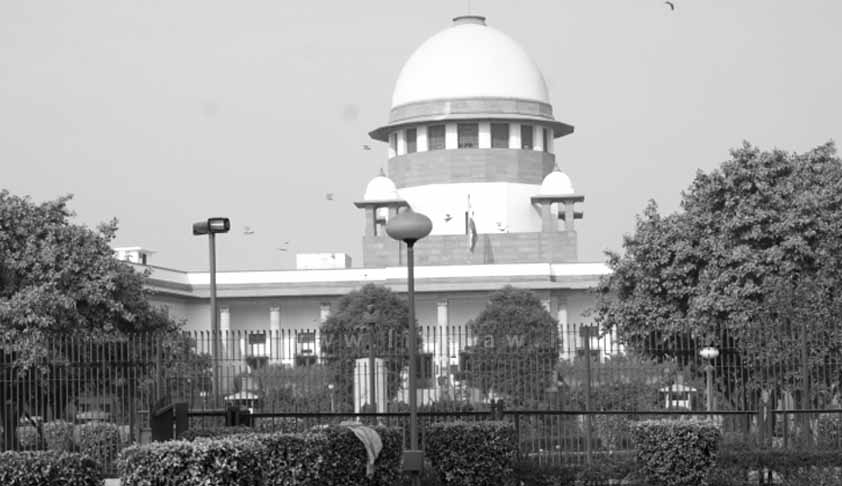‘Free Speech’ Dimension Of Justice Karnan Gag Order
Thulasi K Raj
18 May 2017 7:43 PM IST

The Supreme Court order dated May 9, 2017, punishing Justice Karnan states inter alia that “since the incident of contempt includes public statements and publication of orders made by the contemnor, which were highlighted by the electronic and print media, we are of the view, that no further statements made by him should be published hereafter”. This part of the order is not only strange and unusual, but offends free speech in dangerous ways. I will argue that this prohibition of publication has a three-dimensional effect on the freedom of speech and expression: first on Justice Karnan himself, second on the press and third, on the general public at large.
Firstly and most proximately, it plainly violates Justice Karnan’s constitutional right to freedom of speech. Individuals have the right to exercise every aspect of free speech, be it engaging in poetry or publishing a critical article. No Constitution in a liberal democracy can permissibly make a distinction between convicts and non-convicts as regarding their right to free speech. In fact, a combined reading of Articles 14, 19 and 21 - famously called the golden triangle in Indian jurisprudence - would clearly suggest a prohibition against making such a distinction.
The Karnan gag order conveniently deterred self-expression, which is fundamental to free speech. In Procunier v. Martinez, (1974) the United States Supreme Court primarily considered the legality of prisoner mail censorship regulations issued by the State Department of Corrections. It is worthwhile to quote the court at length: “When the prison gates slam behind an inmate, he does not lose his human quality; his mind does not become closed to ideas; his intellect does not cease to feed on a free and open interchange of opinions; his yearning for self-respect does not end; nor is his quest for self-realization concluded. If anything, the needs for identity and self-respect are more compelling in the dehumanizing prison environment. Whether it’s an O. Henry writing his short stories in a jail cell or a frightened young inmate writing to his family, a prisoner needs a medium for self-expression. It is the role of the First Amendment and this Court to protect those precious personal rights by which we satisfy such basic yearnings of the human spirit.” Justice Karnan is no exception.
Secondly, the order seeks to impose impermissible burdens on press freedom. It invariably constitutes a prior restraint upon any publication that seeks to report the statements by Justice Karnan. Prior restraint may be understood as restrictions imposed, usually by the government prior to the publication. It essentially is pre-censorship as opposed to banning the material after its publication. The peculiarity of prior restraint is that it suspends speech even before its birth.
The Unites States Supreme Court held prior restraint to be generally unconstitutional as early as in 1931 in Near v. Minnesota. The court quoted Blackstone, “Every freeman has an undoubted right to lay what sentiments he pleases before the public; to forbid this is to destroy the freedom of the press…” Now it might be true that generally speaking, offences can invite penal consequences as and when they are committed. But what is problematic is when the court pre-empts the commission of an offence and shuts it down.
The direction also creates a chilling effect on free speech by making people hesitant to speak or express. It ‘chills’ or deters statements, remarks and criticisms against the judicial system and judgments in general. It limits the free exchange of ideas and thoughts, interrupts public discourse and unreasonably seeks to retain the status quo. As the Supreme Court reminded in Shreya Singhal vs Union of India (2015), it “forces people to self-censor”. It basically orders that all discussions on a particular subject matter must cease immediately. This grave impact of Karnan gag order is particularly terrifying.
Thirdly, the gag order also curtails the right of the public to know and their freedom to listen and respond. Being properly informed is vital to public debate. The right to information, according to the very same Supreme Court, is a fundamental aspect of the right to free speech. (See for instance, State Of UP vs Raj Narain, 1975). Free speech protects the rights of the recipients of information as well. As held by the US Supreme Court in Virginia Pharmacy Board vs Virginia Citizens Consumer Council (1976), the right to free speech extends to the “communication, its source and to its recipients”.
Conrado Hübner Mendes, in his book Constitutional Courts and Deliberative Democracy, proposes a theory of deliberative adjudication. He argues that constitutional adjudication in courts augments and enriches deliberative democracy. Although exposed in theoretical terms, he makes a quite convincing case that when constitutional courts decide cases, it has a positive impact on political deliberation. It is curious to note that the Karnan gag order not only failed to meet this rudimentary test, but also purports to disturb the very scheme of deliberative democracy.
 Thulasi K Raj is a lawyer at the Kerala High Court and an alumna of University College London. Email: thulasikraj.ils@gmail.com.
Thulasi K Raj is a lawyer at the Kerala High Court and an alumna of University College London. Email: thulasikraj.ils@gmail.com.
[The opinions expressed in this article are the personal opinions of the author. The facts and opinions appearing in the article do not reflect the views of LiveLaw and LiveLaw does not assume any responsibility or liability for the same]


